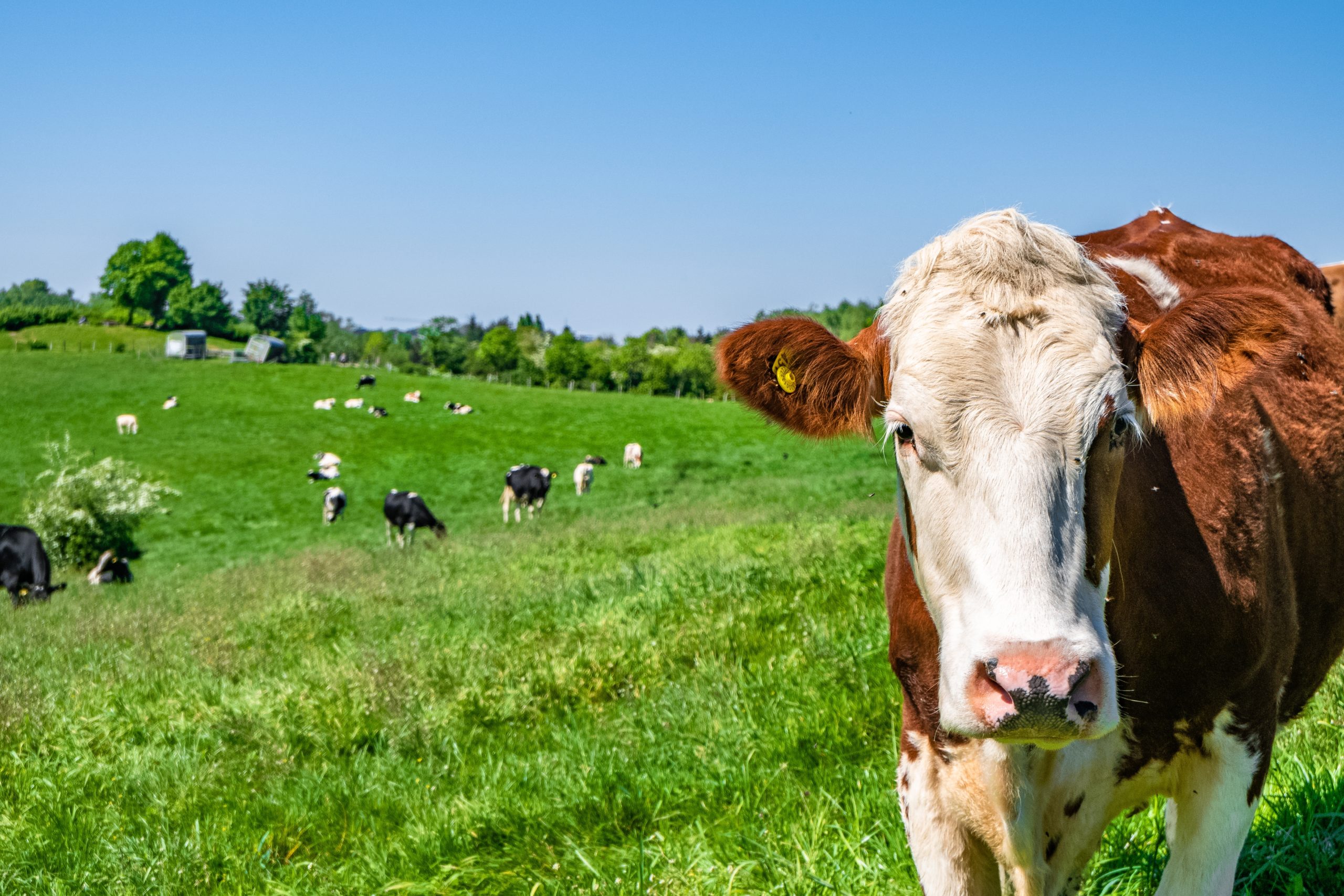Original article (in Serbian) was published on 2/7/2024; Author: Milica Ljubičić
It is estimated that an average cow emits nearly six tons of greenhouse gases annually. In response, Denmark recently decided to tax livestock farmers and invest the revenue in sustainable energy sources. However, Serbian tabloids have presented this complex issue of livestock and agriculture’s environmental impact, and the efforts to reduce harmful emissions, in a crude and derisive manner. For example, Alo claims that the Danes “accuse cows of endangering the planet” and have employed an entire state mechanism to prevent the animals from “burping and passing gas.”
Alo published a text titled “Justice for cattle. A useful and tame animal accused of endangering the entire Earth”. The text states that cows eat a lot of grass and produce a lot of methane. “They burp and pass gas. Now there are already whole state mechanisms that try to prevent that”.
On the other hand, Vecernje novosti correctly reported on this topic, but they did not resist trivializing it in the headline, thus wondering “Does a cow belch and endanger the planet?”
While reducing the story to cows burping, Alo fails to explain the complex problem of pollution, which, among other things, is also contributed by livestock.
The reason for the text is the recently signed Agreement on Green Denmark, which, among other things, foresees the taxation of livestock farmers due to the emission of greenhouse gases (such as carbon dioxide and methane) produced by livestock.
This agreement, however, does not mean that the number of cows is planned to be reduced, nor does it refer only to livestock. It includes a whole series of measures that should contribute to the reduction of greenhouse gas emissions – the goal is that in 2030 there will be 1.8 million tons of harmful gases in the atmosphere less than today.
The document also foresees afforestation, subsidies for changing the use of fertilizers or the use of additives in livestock nutrition that reduce methane emissions, and one of the measures is taxing farmers due to greenhouse gas emissions produced by livestock. The effective tax will amount to about 16 euros per ton of greenhouse gas pollution starting in 2030 and will increase to about 40 euros by 2035. The Danish organization Concito, usually focused on climate change and sustainable development, has calculated that the average cow annually expels about 5.6 tons of gases that contribute to the greenhouse effect.
On the website of the Danish Ministry of Taxes, it is stated that tax revenues will be invested in further investments, among other things, to support the green transition, i.e. switching to green energy, investment in renewable sources, and reduction of harmful gases. That money, they say, will help even the poorest farmers who will be hit the hardest by the tax.
“The purpose of the tax is to encourage the sector to look for solutions to reduce emissions”, Danish economist Torsten Hasforth told CNN.
However, as CNN writes, some farmers from Denmark believe that this measure is a “terrible experiment”, and that they do not believe that Denmark will solve the climate problem with this agreement.
Denmark is known for livestock farming in Europe, and according to the data of Statistics Denmark, this country had over 15 thousand registered farms in 2023.
What does agriculture have to do with methane and how is it all connected to the greenhouse effect?
The Food and Agriculture Organization of the United Nations (FAO) explains that agriculture greatly contributes to greenhouse gas pollution – they are emitted during food production, from animal faeces or any change in land use during which a large amount of these gases are released.
Methane is the gas that is often talked about, especially when it comes to the impact of agriculture and cattle breeding on pollution. Methane is emitted by domestic animals such as cattle, goats, and sheep during the digestion of food, as well as animal manure. In smaller quantities, it also comes from the cultivation of rice, but also from the traditional production of oil and gas. About 40 percent of this gas comes from natural sources (such as wetlands), and about 60 percent is the result of human activity.
“The largest anthropological source is agriculture, responsible for approximately one-quarter of methane emissions, followed by the energy sector, which includes emissions from coal, oil, gas and biofuels”, states the International Energy Agency. The share of agriculture in the total global emissions of harmful gases is almost 12 percent.
According to the United Nations, methane emissions can be reduced by changing agricultural technology, switching people to a plant-rich diet and accepting alternative sources of protein. They say scientists are investigating alternative types of livestock food to reduce methane emissions and looking for new ways to manage manure.
The International Energy Agency announced in 2023 that a third of the “responsibility” for global warming comes from methane and that in 2022 there was a significant increase in this gas.



